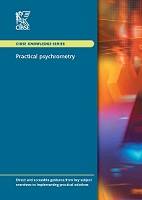February 26, 2013
Psychrometry is key to holistic energy efficiency

A holistic energy efficiency strategy is needed to ensure a balance between efforts to make buildings more airtight and the need to increase ventilation. This is why an understanding of psychrometry is an increasingly important issue for the built environment. Psychrometry is used to prevent environments being created which are detrimental to health, either through too dry an atmosphere or conditions where damp and mould can flourish says the Chartered Institution of Building Services Engineers (CIBSE) which has issued new guidance.
In ill-ventilated spaces moist conditions can allow mould and spores to grow and dust mites to thrive. English Heritage has already warned of the potential damage caused by insulating internal walls and reducing ventilation in historic buildings. A holistic view of a building is also necessary with the planned retrofitting of UK housing stock, much of which consists of older properties, targeted by the Government’s Green Deal.
KS20: Practical Psychrometry, available from the online CIBSE Knowledge Portal, is aimed at anyone involved in designing and operating the systems that achieve comfortable environments for occupants.
Written for those requiring an introduction to psychrometry, the guide covers some typical examples of sample systems. The publication looks at the properties of atmospheric air; the basis for and the construction of the psychrometric chart; psychrometric processes such as heating, cooling, humidification and dehumidification and the equipment that is used.
Practical Psychrometry is available at https://www.cibseknowledgeportal.co.uk/ and is free of charge to CIBSE members.













